Pacific Rhododendron: Grow & Care for Rhododendron macrophyllum
Written by Iris
Aug 06 2021
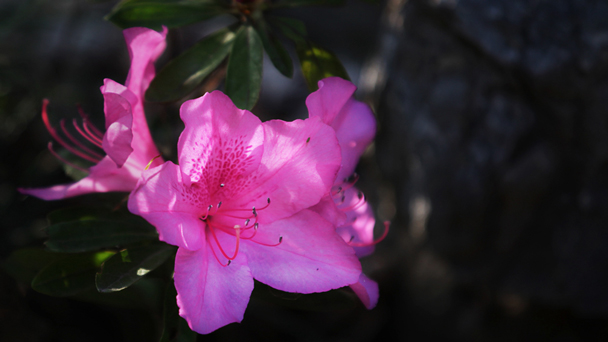
Rhododendrons, commonly known as Pacific rhododendrons or coastal rhododendrons, are native to the Pacific Northwest. They grow west of the Cascade Mountains between British Columbia and Northern California. They can be found from coastal areas to altitudes of about 6,000 feet. In Washington, wild plants are commonly found on the Olympic Peninsula and in the Cascade Mountains.
For a new planting of Pacific rhododendrons, spade over the entire area and add commercial compost, a commercial sludge, or composted steer manure. Amend the entire area, not just the individual planting hole. Pacific rhododendrons like the naturally acid soils of the maritime Pacific Northwest and will appreciate an acid-based fertilizer before bloom. Settle the plant at soil level, no deeper than it was in the nursery container.
Only a few Pacific rhododendrons can take full sun without damage. Many Pacific rhododendrons want filtered light or dappled shade. Too much shade will reduce bloom. And Pacific rhododendrons may not get enough water if they are planted next to big, greedy tree roots.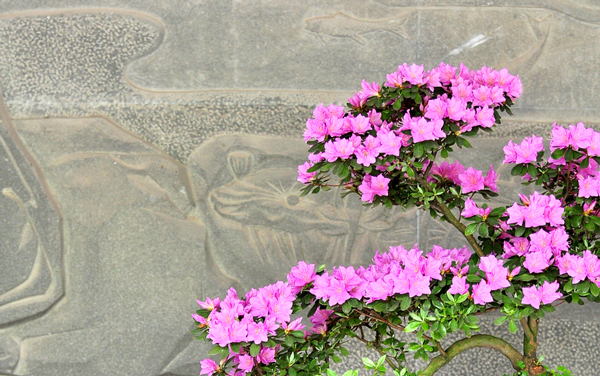
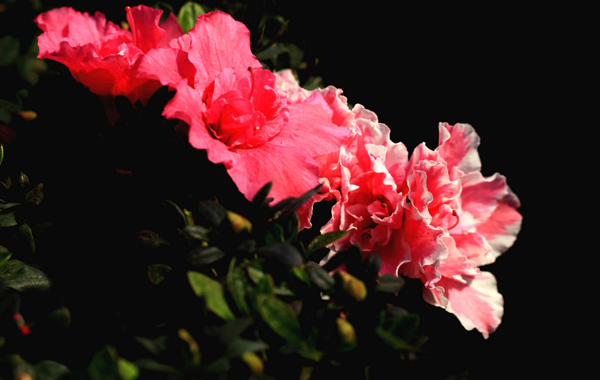
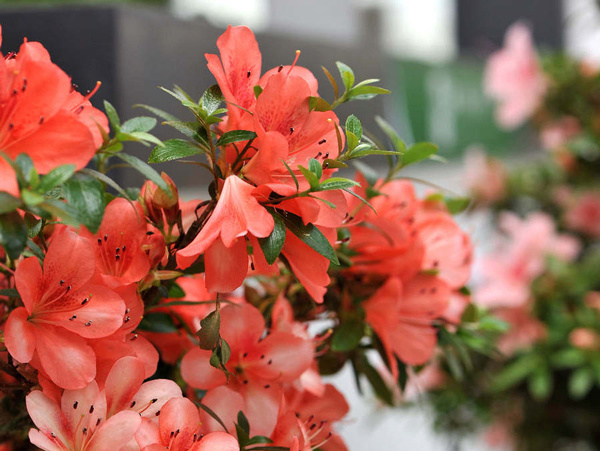
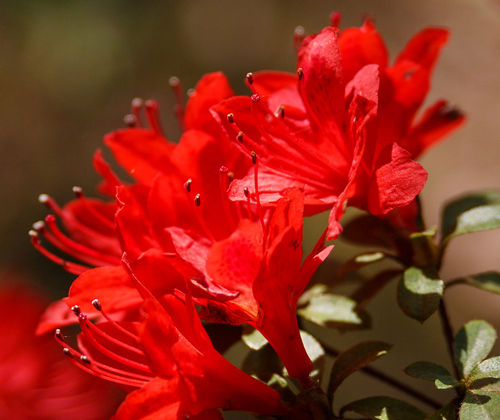
If the plant has been long-neglected, it likely will be necessary first to cut out a tangle of dead branches. Then remove cross branches and weak wood. Remove excess branches to give remaining ones room to grow. Except when layering a plant, remove drooping branches. Remove spindly shoots that sometimes develop along the bole.
Insects. Oblique-banded leaf rollers feed on and web new growth in the spring and early summer.
Root weevils cause considerable trouble to many ornamentals. The adults cause minor damage to the tops by notching the leaves, producing a scalloped effect along the leaf margins. This damage is negligible compared to that done by the larval form to the root system. Young roots are destroyed, and often the stem is girdled, leading to death of the plant.
Spider mites often web leaves and cause them to become yellow and dry. Heavy infestations may cause defoliation.
Aphids are troublesome on all ornamentals, particularly rhododendrons, where new growth may be distorted by their feeding.
Diseases. Disease problems include leaf spot, rust, leaf gall, and root rot. In all cases, proper identification is necessary before effective control measures can be recommended.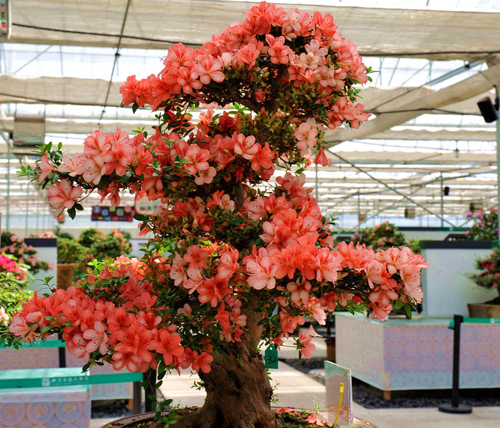
How to Choose and Prepare a Planting SiteWhen to Grow Pacific Rhododendron (Rhododendron macrophyllum)How to Grow Pacific Rhododendron (Rhododendron macrophyllum)How to Care for Pacific Rhododendron (Rhododendron macrophyllum)Pacific Rhododendron (Rhododendron macrophyllum) FAQ
How to Choose and Prepare a Planting Site
The right place for Pacific rhododendrons is in well-drained soil loaded with organic matter. Think of the springy soil under long-established forest trees. Even big old plants have fine, fibrous roots right at the surface of the soil. Organic matter helps the soil retain water, which rhododendrons like in abundance.For a new planting of Pacific rhododendrons, spade over the entire area and add commercial compost, a commercial sludge, or composted steer manure. Amend the entire area, not just the individual planting hole. Pacific rhododendrons like the naturally acid soils of the maritime Pacific Northwest and will appreciate an acid-based fertilizer before bloom. Settle the plant at soil level, no deeper than it was in the nursery container.
Only a few Pacific rhododendrons can take full sun without damage. Many Pacific rhododendrons want filtered light or dappled shade. Too much shade will reduce bloom. And Pacific rhododendrons may not get enough water if they are planted next to big, greedy tree roots.

When to Grow Pacific Rhododendron (Rhododendron macrophyllum)
The American Rhododendron Society (ARS) recommends the following planting times based on your climate.- Mild climates: Pacific rhododendrons can be planted year-round
- Cold climates: Early spring planting is best, with early fall planting a good second choice
- Hot climates: Fall planting allows the plant's root system to establish during the cooler months

How to Grow Pacific Rhododendron (Rhododendron macrophyllum)
Propagating your pacific rhododendron is easy and can be done with cuttings or seeds.
Steps for pacific rhododendron (Rhododendron macrophyllum) Propagation with Seeds- Choose plastic pots that have drainage holes in the bottom and set them on a tray to catch water overflow. Fill each pot with a mixture of equal parts peat moss and perlite. Gently press on the surface of the potting mix to remove air pockets, but don’t compress too firmly because the seedling roots need aeration to grow freely. Pour water into the pots until it drains from the bottom and let the pots sit in the water for 20 minutes. Then discard the extra water.
- Sprinkle the rhododendron seeds thinly onto the surface of each pot; the seeds are very fine, so go lightly. Leave the seeds on the surface and place each pot into a clear plastic bag. Tie the bags closed with a loose knot and place the pots in an area that receives 10 to14 hours of bright light and a temperature of 68 to 72 degrees Fahrenheit. You can leave your seeds to germinate. Don’t worry about providing more water at this point because the plastic will keep them moist.
- Poke two or three holes in the plastic bag when you see the seedlings emerge from the soil in three to six weeks to slowly lower the humidity level. Remove the bag completely when they grow their second set of true leaves and they are about 2 to 4 inches tall. Thin out the weaker seedlings and keep the most vigorous of them so that each pot contains one to three seedlings. Water them from below by filling the tray under the pots. Give planting mix 10 to 15 minutes to soak up the water, then discard the extra water. Don't allow seedlings to dry out completely.
- Separate each seedling into its own 4- to 6-inch pot eight to 10 weeks after they have hardened off and are not tender. Keep them evenly moist but not waterlogged. Dilute rhododendron fertilizer by half and add it to the seedlings' water once a month. Transplant them outdoors when they are at least 15 inches tall.

Steps for Pacific Rhododendron (Rhododendron macrophyllum) Propagation with Stem Cuttings
How to propagate with cuttings:- Clean a sharp pair of trimmers or scissors, then snip off a stem at the softer woody part of the stem.
- On each side of the stem, slice a small bit of the bark away. This is called wounding, and will allow the plant to create roots easier.
- After this, dip the wounded end of the cutting into rooting hormone, and place in moist soil.
Steps for Pacific Rhododendron (Rhododendron macrophyllum) Propagation with Layers
- Select a suitably low-growing and pliable young branch that will bend down to soil level. Remove any side-shoots but keep the cluster of leaves at the end of the stem.
- About 15cm from the shoot tip, make a nick using a sharp knife on the underside of the branch – aim to cut just halfway through the stem. Dust the area with hormone rooting powder and lay the shoot down on the ground.
- Dig a shallow hole at the point where the stem touches the ground and peg it down firmly to stop it springing up. Cover the stem at this point with compost.
- Weight the buried shoot down with a heavy stone and water regularly to keep the area moist. By autumn the layer will have rooted. Cut if off from the parent plant and replant.

How to Care for Pacific Rhododendron (Rhododendron macrophyllum)
Light
Pacific rhododendrons thrive best in partial shade to full sun. Did you know that the amount of sun this plant gets can actual change its appearance? With more shade, these shrubs take on a more tree-like appearance. If you want your pacific rhododendron to stay more compact and shrub-like, you can keep it in a sunnier location.Soil
Pacific rhododendrons thrive in acidic soil (pH 6 and lower) that are light, well drained, and rich in organic matter. Pacific rhododendrons actually like to grow on top of the landscape, as opposed to deep in the ground. Amending the soil with organic matter such as leaf mulch or fine bark will help both the acidity and drainage.Water
Wherever Pacific rhododendrons are planted, have soaker hoses handy to give the plants good deep soakings around the entire root area during dry summers. Pacific rhododendrons originated in areas with higher summer rainfall than we get. Be sure to wet all the roots fully; container soils sometimes dry out before the surrounding soil, and your rhodies can suffer from drought even if the area around them seems damp. An efficient way to water is to use the "leaky pipe" hoses made of recycled tires. Lay the hoses about 18 inches apart throughout the planting beds.Temperature and Humidity
With pacific rhododendrons commonly found in the coastal and forest regions of California, Washington, and Oregon, this plant naturally likes more humid, moderate temperatures. It is quite cold-hardy, and doesn’t mind freezing temperatures, which is clear from the fact that its hardy to USDA zone 4. The only time freezing may be a problem is in the late spring, if the blooming plant gets caught in a late freeze.Fertilizer
Proper soil preparation before planting, along with regular mulching with organic material during the growing season means extra fertilizer is usually unnecessary. If you think your soil is no longer up to par, apply a fertilizer designed for acid-loving plants in late winter or early spring.Pruning
Pruning of hardened wood can be done at any time except during periods of freezing weather. Early spring generally is best because the new growth then has a full season in which to develop and mature. Pruning immediately after the blooming period is standard practice. However, some rhododendrons that bloom very heavily should be pruned prior to bloom to reduce the number of flowers and thus maintain vigor of the plant. Thinning the flowers also can improve the quality and placement of the ones that remain.If the plant has been long-neglected, it likely will be necessary first to cut out a tangle of dead branches. Then remove cross branches and weak wood. Remove excess branches to give remaining ones room to grow. Except when layering a plant, remove drooping branches. Remove spindly shoots that sometimes develop along the bole.
Pests and Diseases
Pacific rhododendrons are injured by various types of insects and diseases. Look for the characteristic symptoms of the problem and treat plants promptly with appropriate cultural, biological, mechanical, or chemical methods. Various nutrient disorders will be reflected in foliar symptoms unique for the mineral element deficiency or interaction (Table 1). In any case, it's best to check with local gardening experts for controls and problem prevention.Insects. Oblique-banded leaf rollers feed on and web new growth in the spring and early summer.
Root weevils cause considerable trouble to many ornamentals. The adults cause minor damage to the tops by notching the leaves, producing a scalloped effect along the leaf margins. This damage is negligible compared to that done by the larval form to the root system. Young roots are destroyed, and often the stem is girdled, leading to death of the plant.
Spider mites often web leaves and cause them to become yellow and dry. Heavy infestations may cause defoliation.
Aphids are troublesome on all ornamentals, particularly rhododendrons, where new growth may be distorted by their feeding.
Diseases. Disease problems include leaf spot, rust, leaf gall, and root rot. In all cases, proper identification is necessary before effective control measures can be recommended.

Pacific Rhododendron (Rhododendron macrophyllum) FAQ
Are rhododendrons poisonous?
According to the National Capital Poison Center, serious poisoning is unlikely when small pieces of rhododendron or azalea are eaten. However, life-threatening symptoms can occur when large amounts of these plants, or honey made from them, are consumed. The Center recommends watching children and pets closely when outdoors to prevent this from happening. See more Common Poisonous Plants for Dogs and Cats.Why does my rhododendron have yellow leaves?
Wherever soil tests neutral to alkaline (i.e., yielding a pH reading higher than 7), rhododendrons will be hard to grow. When the pH is too high, their leaves turn yellow. Try lowering your soil’s pH by digging in organic matter. If this doesn't work, try an above-ground growing mix for rhododendrons made from 50 percent well-rotted manure, 40 percent high-quality topsoil, and 10 percent shredded leaves, worked together with a 5-inch layer of peat moss.Why doesn't my rhododendron flower?
Failure to bloom is often caused by one of the following two factors: Cold weather kills their flower buds, or they aren't getting enough direct sun. Pick a rhododendron variety that has been proven hardy in your area and plant it in a location with an eastern or southern exposure.
Latest Updated
- Benefits of Bugleweed - 7 Science-backed Health Benefits
- Bugleweed Dangers & Side Effects - Is It Poisonous?
- How to Plant Evergreen Trees - What You Should Know
- When to Plant Evergreens - Grow Guide for Evergreen Trees
- 12 Wonderful Evergreen Shrubs for Your Garden
- 12 Popular Evergreen Plants with Pictures for Beginners
- When And How To Prune A Lilac Bush Like a Pro
- How to Grow & Care for Lilac Vine (Hardenbergia Violacea)
- Japanese Lilac Tree (Syringa Reticulata) Care & Propagation Guide
- Shumard Oak Pros and Cons - What to Know
Popular Articles
- Winter maintenance of Antirrhinum Majus
- How to Grow Terminalia Mantaly Tree
- How to Grow and Care for Crossostephium Chinense
- How to grow Antirrhinum Majus in spring
- Peristeria Elata (Dove Orchid) Profile: Info & Care Guide
- Underwatered Snake Plant (Sansevieria Trifasciata) - Signs And How To Fix
- How to Care for Brazilian Jasmine Plant (Mandevilla Sanderi)
- How to Grow & Care for Graptopetalum Purple Delight in Summer
- Rosa Chinensis (China Rose): Plant Growing & Care Tips
- How to Care for Baby Sun Rose (Aptenia Cordifolia)